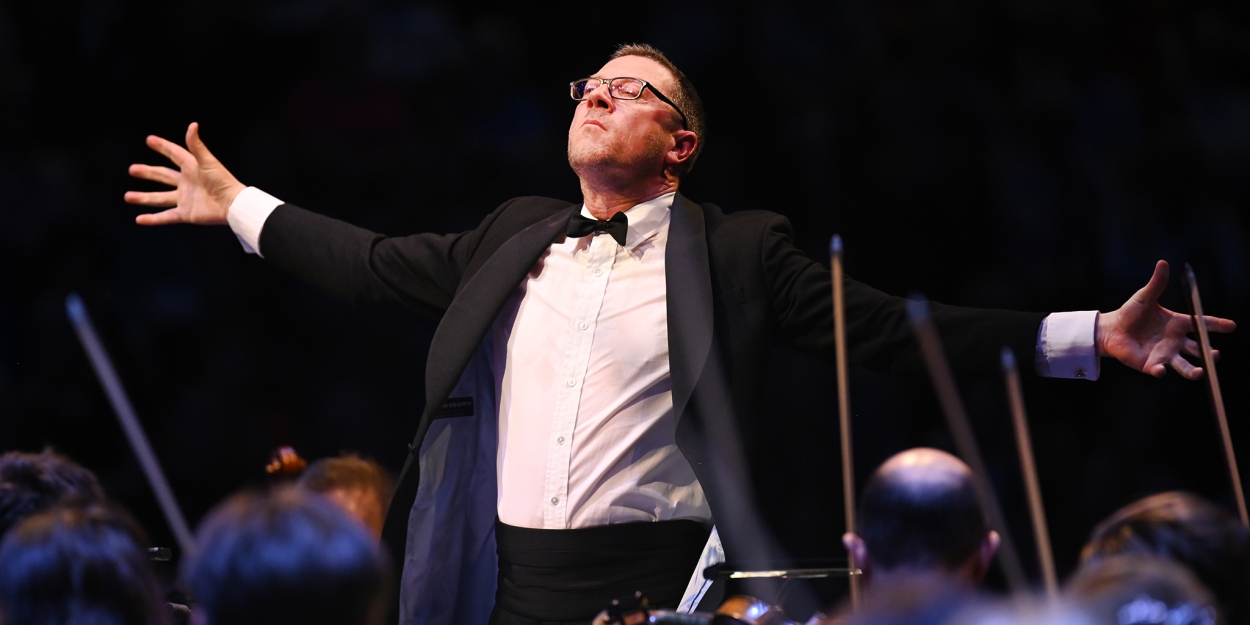Review: BBC PROMS: PROM 21: THE SINFONIA OF LONDON AND JOHN WILSON
A awesome demonstration of why Wilson's Sinfonia has such a blistering reputation

![]() John Wilson and the Sinfonia of London have rightly earned a reputation for holding audiences rapt with their vivid realisations of music. Last night, you could have heard a pin drop in the majestic Royal Albert Hall, as they returned to The Proms for victorious fourth consecutive appearance, celebrating American classics.
John Wilson and the Sinfonia of London have rightly earned a reputation for holding audiences rapt with their vivid realisations of music. Last night, you could have heard a pin drop in the majestic Royal Albert Hall, as they returned to The Proms for victorious fourth consecutive appearance, celebrating American classics.
We started with the UK premiere of Wynton Marsalis' "Herald, Holler and Hallelujah!". In 1983, at the age of just 22, trumpeter Marsalis became the first artist to win simultaneous Grammy Awards in both jazz and classical genres. He repeated this feat again the following year. What is not always celebrated is his gift for composition.
"Herald, Holler and Hallelujah!" is a fanfare for brass and percussion, with Wilson darting off into varying dynamics, shades and tempos. Great fun.
The work pays homage to Duke Ellington’s "Black, Brown and Beige", as well as Aaron Copland’s famed "Fanfare for the Common Man". As the last two minutes kick into a swing band mode, we saw the orchestra absorb the energy from the jazz funeral tradition of New Orleans, where Marsalis was born.
Next up was Aaron Copland's "Billy the Kid-Suite", from his 1938 ballet. Here, Wilson demonstrated his skills as a story-teller, as his interpretation of Copland's score transports us to the vast expanses of the American open prairie and the life and death of an outlaw on the run.
Barber's 1936 "Adagio for Strings" sounded simply hypnotic; the opening single, melodic line of violins, moving to violas and then cellos built to an almost unbearable crescendo. Wilson and the Sinfonia were precise and compelling, with Wilson using the swells within the score to raise every hair on the back of my neck. Spine-tingling indeed.
We then came to, arguably, the most famous American classic of all – Gershwin’s "Rhapsody in Blue", celebrating its 100th birthday. With that unmistakable opening clarinet solo, gliding up the scale to begin what is essentially a Jazz-Age concerto.
Wilson squeezed out all the melodic richness and pure vibrancy of the music, aided by a wonderful piano accompaniment by Steven Osbourne, who gave such a rousing performance that the whole Sinfonia warmly applauded him at the end.
After the interval came "The Unanswered Question" by Charles Ives. Stripped down to a few off-stage strings playing a consistent background tempo and on-stage flutes and a solo trumpet, high in the gallery, responding to each other. Strange, but rather wonderful, as it should be.
We ended with John Adams’ remarkable "Harmonielehre", which Wilson is reported to believe is the greatest piece of US orchestral music. Cast in three large movements, this 42 minute piece is a feat of endurance for both conductor and orchestra. You could tell that Wilson has an intricate understanding of this composition, guiding the orchestra and funnelling his energy directly into their fantastic playing.
The 39 repetitions of E minor at the start of "Harmonielehre" were inspired by a dream Adams had of a huge tanker in San Francisco Bay that took off "like a rocket ship with an enormous force of levitation". The next morning, Adams shook off a year-long writer's block and wrote the piece in three months. Special mention goes to the brass components of those opening chords, which conveyed enormous weight and presence.
The slow second movement, "The Anfortas Wound", inspired by the story of wounded medieval King Anfortas, features melancholic strings and two terrifying, scarring climaxes.
The third ("Meister Eckhardt and Quackie) draws from another dream, of Adams's baby daughter careering round the cosmos on the back of a flying medieval theologian, Meister Eckhardt, which inspired the ethereal music that opens the movement.
The whole piece calls for every part of the orchestra to be utilised, with several percussionists darting around the stage, playing 18 percussion instruments. The result is breathtaking, with levels of energy and vivacity rarely seen on stage. Wilson really is a master of breathing life into the light and shade of music, bringing out almost unknown textures and angles.
The Sinfonia of London comes with a reputation of pinpoint accuracy that Wilson manages to sharpen into both dynamism and fluidity. No wonder they are now an established favourite at the Proms.
BBC Proms continues at the Royal Albert Hall until 14 September
Photo Credits: BBC / Chris Christodoulou
Reader Reviews
Videos


